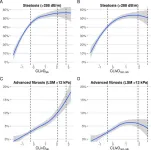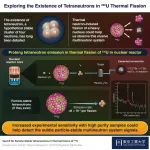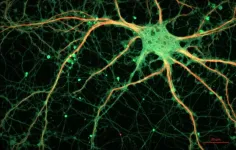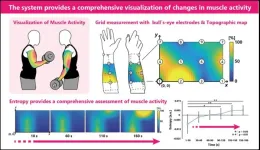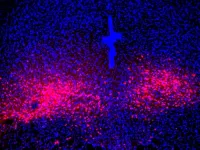100 years of Science Changing Life: Scripps Research celebrates a century of transforming human health
LA JOLLA, CA—Scripps Research, a nonprofit biomedical institute ranked one of the most influential in the world for its impact on innovation, will celebrate its 100-year history throughout 2024. This significant milestone marks a century of seminal discoveries in immunology, infectious diseases (such as COVID-19, flu, HIV), neuroscience, heart disease, cancer, and more. The institute has also made strides in groundbreaking chemistry advances, drug development and educational outreach efforts while contributing numerous findings that have improved human health around the world.
Since its founding by philanthropist and journalist Ellen Browning Scripps in 1924, Scripps Research has remained at the forefront of science and medicine. Located in Torrey Pines, the institute now houses six research departments, multiple Nobel laureates and a top-ranked graduate school. Discoveries at Scripps Research have led to 15 approved medicines, including five invented within the institute’s labs. Scripps Research has also been an influential force in shaping the bioscience community atop the Torrey Pines Mesa, which is now a thriving and collaborative ecosystem of academic institutions, biopharmaceutical companies and nonprofit organizations.
As Scripps Research enters a new century, the institute plans to expand its global impact on science and human health. Researchers will continue pursuing bold, transformative ideas, while translating these foundational discoveries into life-saving medicines. These are aimed at treating a spectrum of severe conditions, including cancer, neurological disorders, infectious diseases and much more.
Take a virtual flight through Scripps Research Labs
Cutting-edge drone video shows an inside glimpse into one of San Diego’s globally renowned research institutes as it celebrates 100 years of “science changing lives.” Fly over the Torrey Pines cliffs, through active science laboratories, and alongside researchers working on experiments in this exclusive glimpse of labs in celebration of the Institute’s centennial.
To view the drone video, click here.
Celebrating 100 Years
To commemorate its centennial milestone and highlight its future vision, Scripps Research is planning several celebration-related activities, including:
Campus installations
Celebratory internal events
A special Front Row lecture series for the public
A video series sharing the Institute’s scientific achievements
A commemorative Scripps Research Magazine issue
Dedicated donor events
"Scripps Research Day" on February 16th, 2024, as proclaimed by the Mayor of San Diego Todd Gloria
For additional media assets related to the Scripps Research centennial, click here.
About Scripps Research
Scripps Research is an independent, nonprofit biomedical institute ranked one of the most influential in the world for its impact on innovation by Nature Index. We are advancing human health through profound discoveries that address pressing medical concerns around the globe. Our drug discovery and development division, Calibr, works hand-in-hand with scientists across disciplines to bring new medicines to patients as quickly and efficiently as possible, while teams at Scripps Research Translational Institute harness genomics, digital medicine and cutting-edge informatics to understand individual health and render more effective healthcare. Scripps Research also trains the next generation of leading scientists at our Skaggs Graduate School, consistently named among the top 10 US programs for chemistry and biological sciences. Learn more at www.scripps.edu.
END
100 years of Science Changing Life: Scripps Research celebrates a century of transforming human health
2024-01-04
(Press-News.org)
ELSE PRESS RELEASES FROM THIS DATE:
JAMA names seven academic physicians and nurses to new Editorial Fellowship Program
2024-01-04
Chicago, January 4, 2024 — The JAMA Network today announces a new class of seven academic physicians and nurses selected for a new program to provide junior faculty and current research fellows opportunities to learn about biomedical journals and scientific publication. This inaugural group of fellows will spend six months immersed as part of the JAMA editorial team to obtain direct exposure to the editorial review process and enhance their skills in scientific communication.
Fellows will be assigned to a current JAMA editor for mentorship, attend manuscript meetings, participate in discussions about research design, data validity, potential clinical importance, and conduct ...
New technique could improve liver fibrosis treatment
2024-01-04
Chronic liver disease, a growing threat to global health, often progresses silently in its early stages. Detecting its precursor, steatotic liver disease (SLD), and advanced liver fibrosis before complications arise is crucial to prevent devastating outcomes. The newly developed Chronic Liver Disease (CLivD) score offers a promising non-invasive approach to this challenge.
In a recent study involving a US general population sample, researchers explored the CLivD score’s ability to identify SLD and advanced fibrosis, assessed using liver stiffness measurement (LSM). The study also evaluated the potential ...
Hunting for the elusive tetraneutrons with thermal fission
2024-01-04
Tetraneutron is an elusive atomic nucleus consisting of four neutrons, whose existence has been highly debated by scientists. This stems primarily from our lack of knowledge about systems consisting of only neutrons, since most atomic nuclei are usually made of a combination of protons and neutrons. Scientists believe that the experimental observation of a tetraneutron could be the key to exploring new properties of atomic nuclei and answering the age-old question: Can a charge-neutral multineutron system ever exist?
Two recent experimental studies reported the presence of tetraneutrons in bound state and resonant state (a state that decays ...
Understanding the role of a new enzyme in the development of autism spectrum disorder
2024-01-04
Over the past decades, scientists have made substantial progress unveiling the underlying mechanisms behind many psychiatric disorders. Every year, new genetic mutations or protein dysregulations are identified as potential culprits for the symptoms, and sometimes even the root causes of complex neurological diseases, including autism spectrum disorder (ASD), schizophrenia, and Alzheimer’s.
Despite these efforts, the precise roles of several proteins involved in brain function remain obscure. Such is the case for indoleamine 2,3-dioxygenase 2 (IDO2), an enzyme expressed in the brain and metabolized by the ...
An innovative approach for evaluating muscle coordination and fatigue
2024-01-04
Surface electromyography (sEMG) is a traditional method used to measure the electrical activity of muscles during physical activity. This method has remained unchanged for over 70 years and involves the use of two standard approaches. The first involves a pair of electrodes—metals that conduct electricity through non-metals—to record from a particular muscle, while the second employs a grid of electrodes arranged in a small rectangular layout in order to measure the potential distribution of intra-muscle activity. However, these approaches only provide a measurement of a single muscle at a time. Thus, limiting our understanding of how our muscles coordinate ...
New theoretical framework unlocks mysteries of synchronization in turbulent dynamics
2024-01-04
Weather forecasting is important for various sectors, including agriculture, military operations, and aviation, as well as for predicting natural disasters like tornados and cyclones. It relies on predicting the movement of air in the atmosphere, which is characterized by turbulent flows resulting in chaotic eddies of air. However, accurately predicting this turbulence has remained significantly challenging owing to the lack of data on small-scale turbulent flows, which leads to the introduction of ...
Scientists use high-tech brain stimulation to make people more hypnotizable
2024-01-04
How deeply someone can be hypnotized — known as hypnotizability — appears to be a stable trait that changes little throughout adulthood, much like personality and IQ. But now, for the first time, Stanford Medicine researchers have demonstrated a way to temporarily heighten hypnotizablity — potentially allowing more people to access the benefits of hypnosis-based therapy.
In the new study, to be published Jan. 4 in Nature Mental Health, the researchers found that less than two minutes of electrical ...
Salk scientists uncover key brain pathway mediating panic disorder symptoms
2024-01-04
LA JOLLA (January 4, 2024)—Overwhelming fear, sweaty palms, shortness of breath, rapid heart rate—these are the symptoms of a panic attack, which people with panic disorder have frequently and unexpectedly. Creating a map of the regions, neurons, and connections in the brain that mediate these panic attacks can provide guidance for developing more effective panic disorder therapeutics.
Now, Salk researchers have begun to construct that map by discovering a brain circuit that mediates panic ...
Gender parity in autism research: Synaptic similarities challenge focus on male models
2024-01-04
New study reveals striking similarities in synaptic abnormalities and behavioral patterns between male and female mouse models of autism spectrum disorder (ASD). The study challenges the traditional focus on male subjects in ASD research and highlights the critical importance of including both sexes in investigations. This finding urges a pivotal shift in the scientific community's approach to understanding and addressing ASD, emphasizing the necessity of considering both males and females to comprehensively ...
Tiredness experienced by Long-COVID patients has a physical cause
2024-01-04
Researchers from Amsterdam UMC and Vrije Universiteit Amsterdam (VU) have discovered that the persistent fatigue in patients with long-COVID has a biological cause, namely mitochondria in muscle cells that produce less energy than in healthy patients. The results of the study were published today in Nature Communications.
"We're seeing clear changes in the muscles in these patients," says Michèle van Vugt, Professor of Internal Medicine at Amsterdam UMC.
25 long-COVID patients and 21 healthy ...


